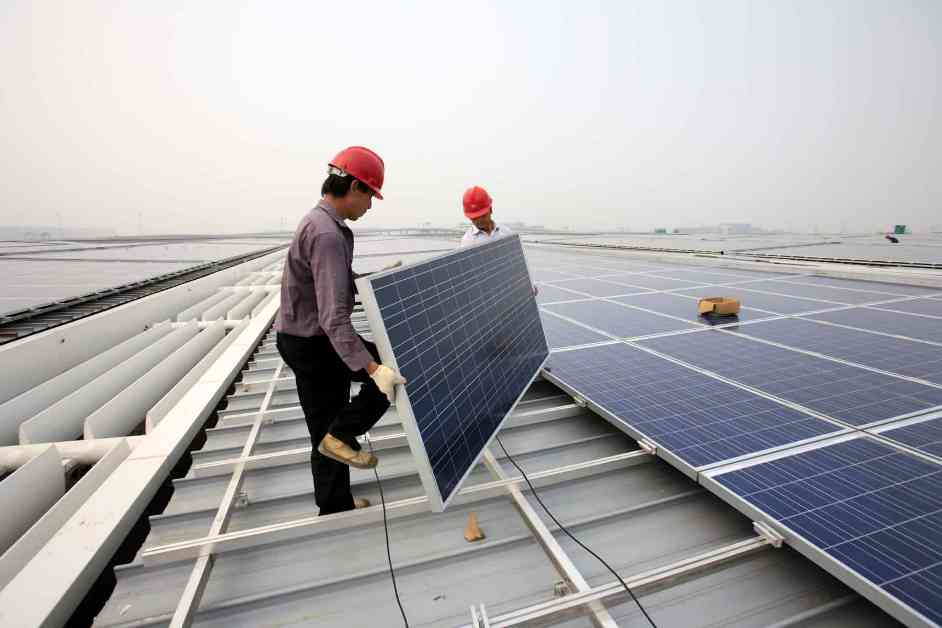China is leading the way in the global transition to renewable energy, with a significant focus on wind and solar development. According to a recent study by the Global Energy Monitor, almost two-thirds of the world’s large wind and solar energy projects are located in China. The country is currently constructing 339 gigawatts (GW) of renewable capacity, including 159 GW of wind power and 180 GW of solar power. This amount is nearly double the total capacity being built in the rest of the world combined, surpassing the United States, which is building 40 GW.
This rapid growth in renewable energy capacity in China is bringing the world closer to the target of tripling renewable energy by 2030, even without considering hydropower. China is on track to achieve its goal of installing 1,200 GW of wind and solar power by next month, six years ahead of schedule. The report emphasizes the importance of China setting more ambitious climate targets to encourage other nations to invest in renewables at a similar pace.
The expansion of renewable energy in China has been largely driven by strong government support. President Xi Jinping has highlighted the importance of green manufacturing and new quality productive forces. China installed more solar power between March 2023 and March 2024 than in the previous three years combined. However, despite these impressive figures, China remains the world’s largest emitter of carbon emissions, accounting for 27% of global greenhouse gas emissions in 2020.
China aims to reduce its carbon intensity by 18% and produce 25% of its energy from non-fossil sources by 2030, the year it plans to peak its carbon emissions. To achieve these goals, between 1,600GW and 1,800GW of wind and solar energy will be required. Improved energy storage technology and grid flexibility are crucial in reducing China’s reliance on coal. The government has invested $11 billion in grid-connected batteries in 2023 to address this need.
Despite progress in increasing renewable energy capacity and reducing coal’s share in energy generation, China still faces challenges. The national grid heavily relies on coal plants to meet rising power demand, and there are difficulties in transmitting renewable energy from remote areas to urban centers. However, China’s combined wind and solar capacity is expected to surpass coal capacity this year, marking a significant milestone in its shift towards renewable energy.






